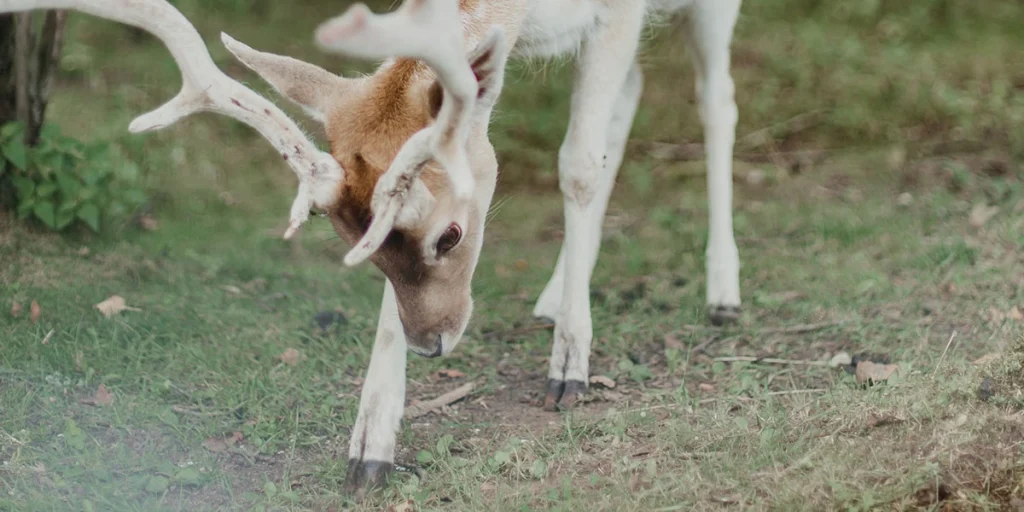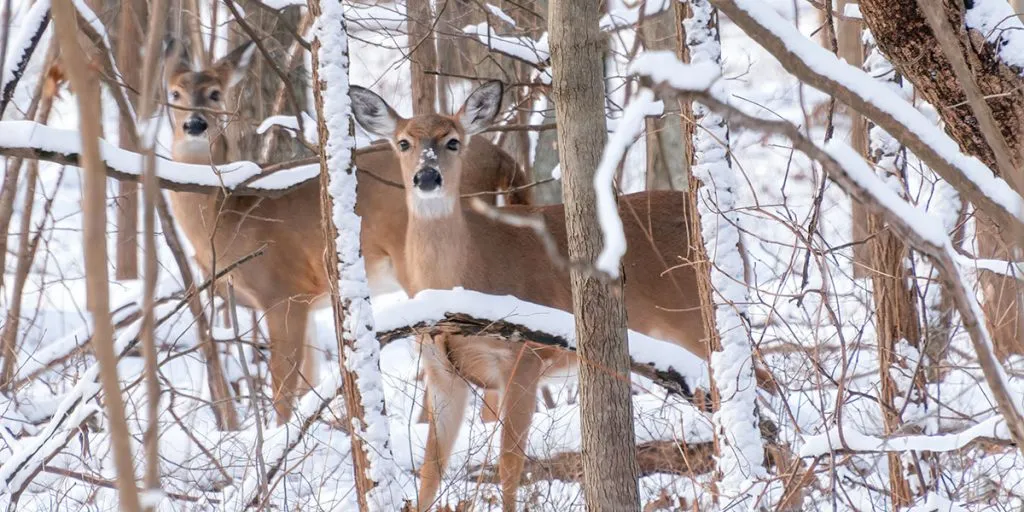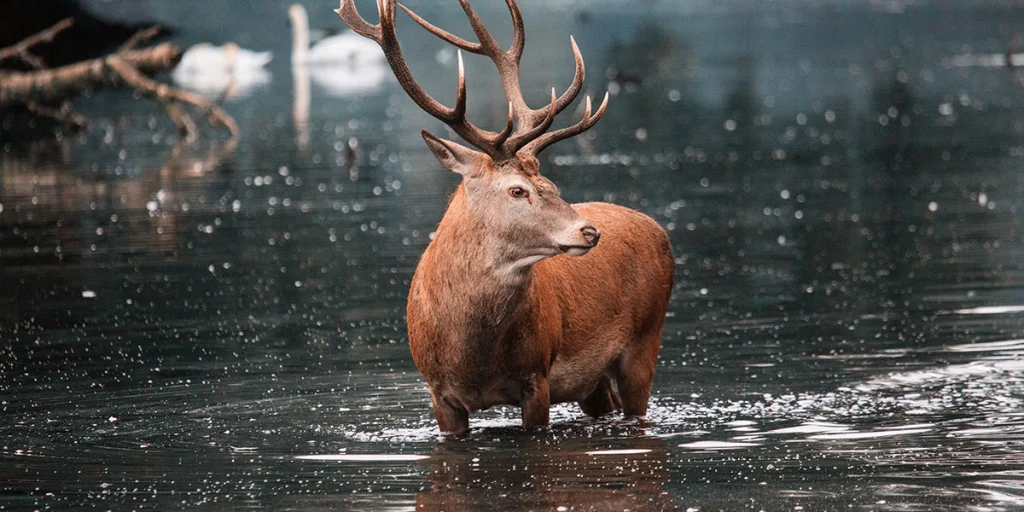Tracking down a deer is not difficult once you learn about the unique shape of deer hooves. The split hoof of the animals can be easily recognized in nature. Those who look down in the forest will find the tracks everywhere.
Deer hooves tell many stories, and this overview will tell some of the more interesting facts behind their uniquely shaped feet.
Much like their majestic-looking antlers, there are so many secrets hiding in the anatomy of these animals. This overview will uncover some of these stories, so let’s dive right into it!
1. Deer Hooves Are Razor Sharp Weapons
Did you know that the four hooves under a deer’s legs are actually very hard and sharp? This does not only help the animals get a better grip on the soil underneath them, but also helps deer fight better.
For example, a mother (called a doe) will protect her young (called a fawn) by trampling anyone that comes near her offspring. Obviously, several warnings are issued before aggression is used by the mother, but she will fiercely protect her young from predators and other dangers.
Getting underneath those long legs will be a really bad experience for most wildlife, but also for a dog protecting its human owner. So make sure to keep your pets on a leash when you walk them in the summertime, because those razor-sharp deer hooves are no joke!
2. Their Hoof Is Made Of Keratin
Many people are not aware that deer antlers are not the same as horns, because there’s a distinct difference. The antlers are made of bone (and other materials such as blood vessels), while horns are made of keratin. That’s the same stuff human nails and hair are made of.
How is that relevant to their hooves? They are also made of keratin! In essence, hooves are the deer equivalent of a human finger- or toenails.
But the antlers are bone. Keratin is also found in hair and fingernails. It makes sense when you think about them in that way, because it’s the location where you’d expect nails.
3. They Help Deer Swim Faster
The interesting shape of a deer’s legs structure, including the hardened bottom parts, has evolved for a reason. Deer are extremely well adapted to escape danger, allowing them to jump very high, run very fast, and also swim very fast.
In fact, those awkwardly shaped split hooves give the animals extra thrust and speed in the water. And they can go fast!
Did you know that a deer is able to swim at speeds of up to 15 mph (24 km/h)? They can even swim in rivers against a strong current, and that’s all thanks to their floating fur and aerodynamic leg shape. This provides them with the needed agility inside and outside the water, in order to escape a potential predator.
4. Hooves Make Deer Walk Like A Ballerina
If you’re someone that ever tried to walk on heels, then you probably know what it’s like to have deer hooves. The animals actually walk a bit awkward at all times, almost similar to how a ballerina would walk wearing dancing shoes.
But even that doesn’t capture it fully — deer actually walk on the nails of their tippy-toes. Could you walk on the toenails of your toes? It really is that extreme! All that crazy tip-toeing around will benefit deer in several different ways:
- It allows them to make less noise while walking, therefore reducing the chance of being spotted by a predator
- It helps them support and distribute their body weight more efficiently while moving around
- It gives them more traction while walking around, increasing maneuverability and overall speed
5. Deer Hooves Have A Traditional Ritual Use
Humans have appreciated the beautiful shape of the deer hoof for many centuries, including native American tribes before European settlers arrived in the USA. Over the course of history, deer hooves have had a wide range of uses, some of which might surprise you.
They have an important ritualistic use in traditional religions, such as rattles for shamanic dances and curing a range of different diseases. Every American tribe had its own purpose for them.
6. Damaged Hooves Won’t Always Grow Back
Bucks have the amazing characteristic of having a regenerative body part. Every year, adult males will grow out an impressive set of antlers and shed them at the end of the season. They grow back every season, which is an amazing feat in and of itself.
Having this ability does not necessarily mean that it can be translated to hooves as well. Hooves grow larger with a fawn aging into an adult, and will not be shedded every season. A hoof does not need to grow back.
However, when a hoof is damaged in specific ways, parts of it have the ability to grow back (but not in a completely normal way). This is comparable to the human ability to grow back skin after having a wound somewhere. It’s not magic, just a lot of body cells at work to keep the body functional at all times!
7. A Hoof Is Not Exclusive To Deer
Did you know that deer are not the only animals that walk on the nails of their toes? There are a lot of herbivorous four-legged mammals that do the same. For example, the split hooves that deer have, can also be found in the following species:
- Cows
- Pigs
- Antelopes
- Gazelles
- Goats
- Sheep
You might notice a lot of cattle on this list, that’s because hooved animals are usually herbivores that live in similar habitats to humans. They are generally herd animals that can be kept in large numbers. Most are plant-eaters, with the exception of the pig which is an omnivore.



